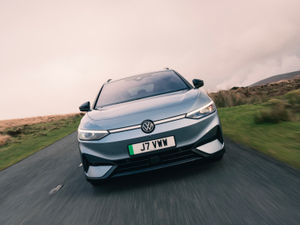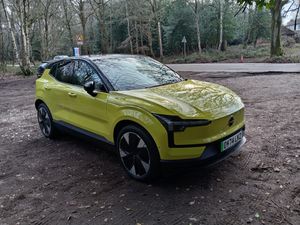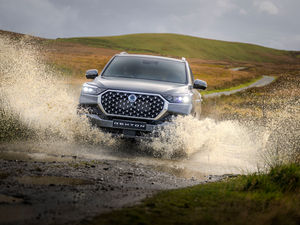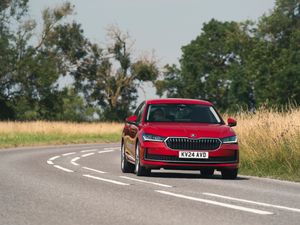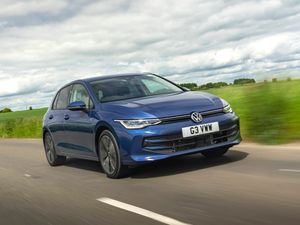First Drive: Is Volkswagen’s updated ID.3 the new family EV hatch of choice?
Volkswagen has tweaked its ID.3 hatchback, but can it compete against newer rivals? Ted Welford finds out.
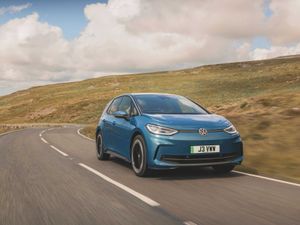
What is it?

Volkswagen’s ID.3 was meant to signal the third era for this German firm. The first was the introduction of the original Beetle, and then the second was when the all-conquering Golf arrived.
But despite being built around specific EV underpinnings – and Volkswagen throwing all it could in terms of technology at it – the ID.3 received a bit of a lukewarm reception, both from the press and the public, with sales not being quite as high as VW predicted.
Volkswagen passenger cars appointed a new CEO, Thomas Schafer, last year and one of his first missions was to fast track an upgraded ID.3 into production. This car has now arrived ahead of schedule, but is it worth considering?
What’s new?

Despite the ID.3 only being introduced in the UK in the latter half of 2020, a facelifted model is already here. On looks alone, not a huge amount seems to have changed. We’ll explore more about the visual changes later, but Volkswagen’s aim was to make the ID.3 look more ‘grown up’.
Mechanically nothing has altered either, so it’s inside where the bulk of the differences occur. The touchscreen, a major bone of contention previously, is running new software, while VW has worked to improve the cabin quality with more soft-touch materials, too.
What’s under the bonnet?

There are two versions of the ID.3 available – the Pro and the Pro S. The former uses a 58kWh battery allowing for a claimed range of 266 miles, while the latter gets a significantly bigger battery that Volkswagen claims an impressive 347 miles for.
We’re trying the Pro S here, but each uses the same 201bhp electric motor, sending drive to the rear wheels. Accelerating to 60mph takes 7.7 seconds, with the ID.3 maxing out at 99mph.
The ID.3 can also charge at up to 170kW, meaning an 80 per cent charge can theoretically take place in just half an hour with a quick enough charger. Efficiency is one of this Volkswagen’s strong points, too, and 300 miles should be achievable without too much effort.
What’s it like to drive?

Volkswagen hasn’t really changed anything about how the ID.3 drives, and we’re fine with that as this is a very accomplished model in this respect. Even on our test car’s large 20-inch alloy wheels, the ride was surprisingly compliant, though you might want to opt for the standard 18-inch rims where maximum comfort is concerned.
It handles well, too, staying planted to the road even when pushed. You can also feel that it’s rear-wheel-drive when pressing on, with the back end feeling ever so slightly playful. We think there’s definitely potential for a sportier ID.3 with a chassis as good as this. This Volkswagen lacks some of the immediacy of rivals like the MG4 while accelerating, but is more than fast enough in day-to-day driving.
How does it look?
You’d really have to see a new and old ID.3 parked next to each other to be able to spot the difference, but one of the most obvious changes is that the gloss black strip at the top of the bonnet is no longer there. There are new diagonal air inlets in the front bumper too, along with two new attractive colours – Dark Olivine Green and Costa Azule Blue.
Volkswagen says it’s tried to give the ID.3 a more grown-up finish; previously the front bumper and C-pillars above the rear wheels had a strange patterned texture, but both of these details have now been removed.
What’s it like inside?

On looks alone, the ID.3’s cabin seems largely unchanged. But we’re pleased to report that a lot of the cheaper, low-rent plastics of the old car (such as on the dashboard and door panels) have been removed in favour of new soft-touch materials. It’s really helped to lift the interior and helped to make it feel more ‘VW’, though there’s lots of questionable use of gloss black in all the places it’s most likely to scratch.
Where the ID.3 can’t be faulted is when it comes to interior space. Despite having a broadly similar footprint to a Golf, there’s significantly more rear seat space inside, while the boot measures a useful 385 litres. Just be aware that if you have the Pro S model, the middle rear seat is removed to be able to accommodate the larger battery.
What’s the spec like?

As standard, the ID.3 comes with plenty of equipment, including adaptive cruise control, ambient lighting, wireless phone charging and a 10-inch touchscreen. The latter previously gathered criticism for being slow, glitchy and difficult to use on the move. Though new shortcut menus make it significantly better to operate, Volkswagen says a completely new screen will arrive in 2024, and we can’t help but feel the firm should have waited until then to introduce this new ID.3.
In terms of pricing, the ID.3 starts from £37,115 for the standard battery or £42,115 for the Pro S. There are lots of options available too, which can quickly rack up the price. Our test car came in at over £50,000 thanks to options like a Driver Assistance Plus Pack (£2,095) and an Exterior Pack (£1,725), and at this price, it looks extortionate.
The ID.3’s main problem comes in the form of the MG4. Choose that car in ‘Extended Range’ form and it’s better equipped, nearly as roomy and just good to drive. But, most importantly, it costs £6,000 less than the Volkswagen.
Verdict
This is a relatively small update for the ID.3, but it does go a long way in improving this hatchback. The higher-quality interior is certainly the best change, but with good driving dynamics and impressive practicality, this Volkswagen remains one of the finest electric hatchbacks available.
The trouble is just its price, and specifically one particular rival. If Volkswagen is to really take the fight to firms like MG, the price just needs to come down a bit.

